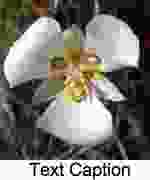This article needs additional citations for verification. (September 2007) |


A compression artifact (or artefact) is a noticeable distortion of media (including images, audio, and video) caused by the application of lossy compression. Lossy data compression involves discarding some of the media's data so that it becomes small enough to be stored within the desired disk space or transmitted (streamed) within the available bandwidth (known as the data rate or bit rate). If the compressor cannot store enough data in the compressed version, the result is a loss of quality, or introduction of artifacts. The compression algorithm may not be intelligent enough to discriminate between distortions of little subjective importance and those objectionable to the user.
The most common digital compression artifacts are DCT blocks, caused by the discrete cosine transform (DCT) compression algorithm used in many digital media standards, such as JPEG, MP3, and MPEG video file formats.[1][2][3] These compression artifacts appear when heavy compression is applied,[1] and occur often in common digital media, such as DVDs, common computer file formats such as JPEG, MP3 and MPEG files, and some alternatives to the compact disc, such as Sony's MiniDisc format. Uncompressed media (such as on Laserdiscs, Audio CDs, and WAV files) or losslessly compressed media (such as FLAC or PNG) do not suffer from compression artifacts.
The minimization of perceivable artifacts is a key goal in implementing a lossy compression algorithm. However, artifacts are occasionally intentionally produced for artistic purposes, a style known as glitch art[4] or datamoshing.[5]
Technically speaking, a compression artifact is a particular class of data error that is usually the consequence of quantization in lossy data compression. Where transform coding is used, it typically assumes the form of one of the basis functions of the coder's transform space.
- ^ a b Katsaggelos, Aggelos K.; Babacan, S. Derin; Chun-Jen, Tsai (2009). "Chapter 15 - Iterative Image Restoration". The Essential Guide to Image Processing. Academic Press. pp. 349–383. ISBN 9780123744579.
- ^ Cite error: The named reference
Alikhaniwas invoked but never defined (see the help page). - ^ Cite error: The named reference
pcmagwas invoked but never defined (see the help page). - ^ Geere, Duncan (13 December 2011). "Glitch art created by 'databending'". Wired. Retrieved 23 December 2011.
- ^ Baker-Smith, Ben (28 April 2009). "Datamoshing – The Beauty of Glitch". Bitsynthesis.com. Archived from the original on 16 November 2010. Retrieved 28 April 2009.